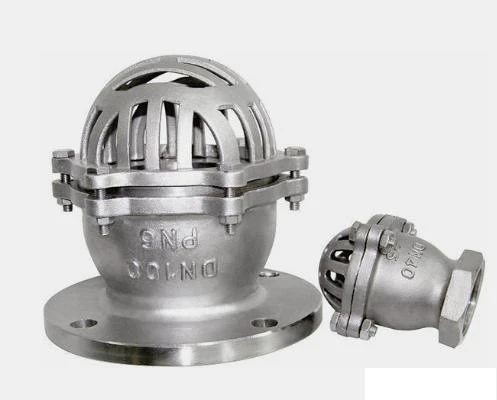Jan . 20, 2025 14:49
Butterfly valves are essential components in various industrial applications, known for their efficiency and cost-effectiveness in controlling fluid flow. A critical element of these valves is the flange, which plays a significant role in ensuring a secure connection and effective operation. In the world of industrial valves, the flange in a butterfly valve is not just a connection interface, but a crucial determinant of the valve's performance and reliability. This exploration delves into the intricacies of flanges within butterfly valves, addressing aspects crucial for product selection and application.

Flanges serve as the connecting interfaces between butterfly valves and the adjoining pipes, enabling secure attachment and detachment with minimal effort. This feature is vital in systems requiring frequent maintenance or reconfiguration, as it reduces downtime and labor costs. Flanges come in different materials, such as stainless steel, carbon steel, and PVC, each offering unique advantages depending on the application's demands. For instance, stainless steel flanges provide superior resistance to corrosion and heat, making them ideal for chemical processing and high-temperature applications.
One of the standout characteristics of butterfly valve flanges is their variety of connection types, including wafer, lug, and double flanged connections. Wafer-style connections are amongst the most economical options, designed to fit snugly between two piping flanges and generally held in place by the strength of the pipe's pressure. This style is particularly useful in systems where weight reduction and cost savings are paramount. However, it requires careful alignment during installation to ensure proper sealing.

Lug style butterfly valves, on the other hand, are characterized by protruding lugs around the valve body. These lugs allow for direct bolt connection to flanges, enabling the removal of one flange side without disturbing the other. This functionality is advantageous in applications requiring routine maintenance or quick replacements, as it provides greater flexibility and control.
The double-flanged butterfly valve is the most robust option, often used in demanding environments requiring high-pressure resilience and structural integrity. The double flanged design allows for a more secure installation and is well-suited for applications involving heavy machinery or hazardous materials, where any risk of leakage could lead to significant operational disruption or safety hazards.
flange in butterfly valve
When selecting a butterfly valve flange, it's paramount to consider the application specifics including pressure ratings, temperature range, and the nature of the media being transported. Branching into the nuances of flange dimensions, professionals must ensure compatibility with ANSI, ISO, or JIS standards to guarantee a proper fit and adherence to safety regulations.
Installation procedures also play a crucial role in the overall success of butterfly valves in industrial settings. Precision in bolting torques and the use of appropriate gaskets are essential to prevent leaks and maintain optimal performance. Engaging experienced personnel in these tasks enhances the reliability and extends the life span of the valve assembly.
From the perspective of industry expertise, the significance of flange material compatibility cannot be overstressed. For instance, in corrosive environments like those encountered in petrochemical industries, the choice of flange material can mitigate the risk of failures that arise from chemical attacks, thus safeguarding the integrity of the entire system.
Trust and authority in butterfly valve applications are built on the foundations of quality assurance and adherence to international standards. Manufacturers who demonstrate compliance with ISO quality management standards and provide thorough testing documentation fortify their reputation as credible suppliers. Buyers should prioritize these aspects when sourcing butterfly valves to ensure they partner with manufacturers that exhibit a solid track record in delivering reliable, high-performance products.
In conclusion, the flange in a butterfly valve significantly influences the operational efficiency, safety, and maintenance ease of industrial systems. A comprehensive understanding of flange types, material considerations, and installation practices ensures that industry professionals make informed decisions that enhance system performance and longevity. As industries continue to evolve, the emphasis on expert selection and trustworthiness remains integral in optimizing valve applications and maintaining seamless industrial operations.


 Call us on:
+86-311-86935302
+86-311-86935302
Call us on:
+86-311-86935302
+86-311-86935302
 Email Us:
info@thriveonvalve.com
Email Us:
info@thriveonvalve.com South of Huanmadian Village Town, Ningjin County, Xingtai, Hebei Province, China
South of Huanmadian Village Town, Ningjin County, Xingtai, Hebei Province, China